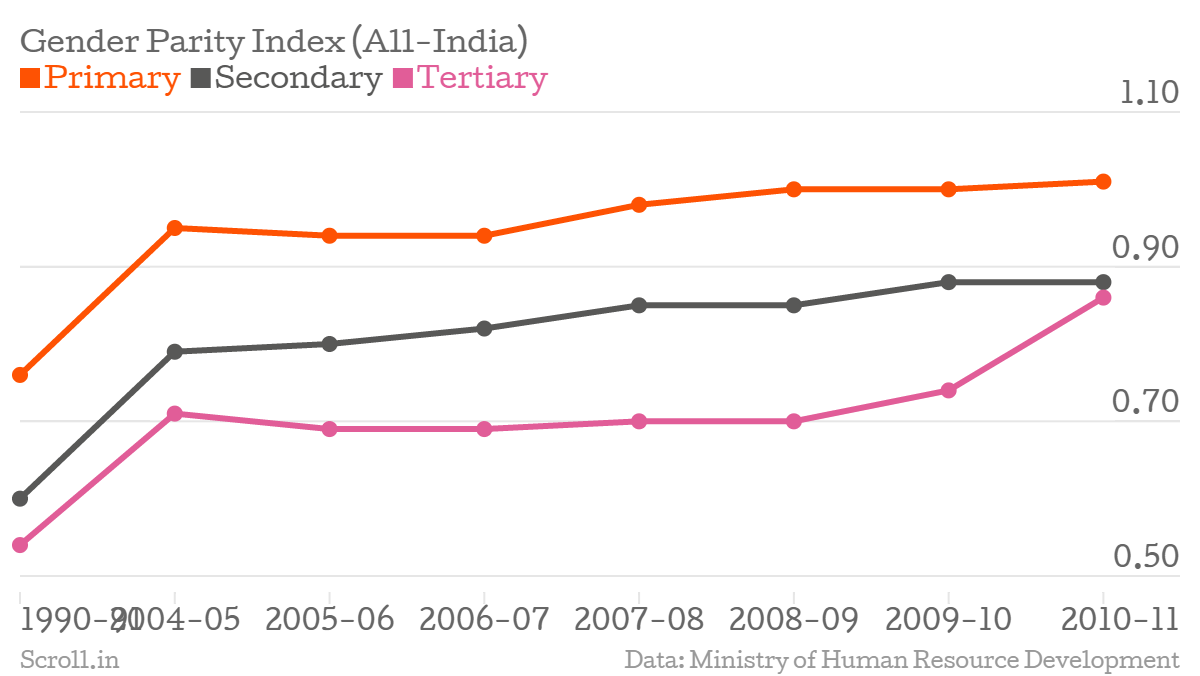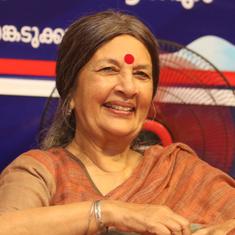But India will not meet all its targets. In fact, it will perform quite poorly on important parameters like fighting extreme hunger and improving maternal health.
The task that India set itself in 2000 was huge. Despite working for a decade towards the targets, a third of the world’s 1.2 billion extremely poor lived in India in 2010, according to a United Nations report. India had the highest number – 1.4 million – of children dying before their fifth birthday in 2012. India, along with Nigeria, accounted for a third of the world’s maternal deaths, with about 50,000 new mothers dying in a year. India still has one of the largest populations practicing open defecation.
At the same time, it has achieved some successes. India has made big moves towards reducing poverty, achieving universal primary education and combating HIV/AIDS.
The government’s report on the Millennium Development Goals in 2014 provides a status check on what targets India has met, is likely to meet by the end of the year, and where it will fall short.
Goal 1: Eradicate extreme poverty and hunger
India’s first target under this goal was to halve the proportion of people living below the poverty line from the 1990 levels and it has performed moderately well there. The 2014 progress report, citing Planning Commission data, shows that the country crossed the halfway mark back in 2012.

The second target was to halve between 1990 and 2015 the proportion of people who suffer from hunger. On this parameter, the country has done less than adequately. Despite the hopeful trend in poverty alleviation, most parts of the country showed a decline in per capita calorie intake between the early 1990s and 2010, according to a survey by the National Sample Survey Organisation.

There has also been little progress against malnutrition among children under the age of three. Fifty two percent of children in this age group were underweight in 1990, and India was supposed to bring that down to 26% by 2015. But the figure is expected to stay stubbornly at 33% by the year’s end.
Goal 2: Achieve Universal Primary Education
India has done well towards ensuring that by 2015 boys and girls everywhere will be able to complete a full course of primary education. The Net Enrollment Ratio for children between the ages of six and 10 in primary schools crossed 95%, the mark accepted as the indicator for universal education, in 2007-08 and since then has improved it to more than 99%.
The rate of school dropouts has also fallen, with a larger proportion of students making it so Class V in 2012 than in 2008.

Moreover, government data shows that youth literacy improved from 61.9% in 1991 to 76.4% in 2001, it is predicted is that India will achieve 100% youth literacy this year.
Goal 3: Promote Gender Equality and Empower Women
India has had moderate success in closing the gender gap in primary and higher education. The Gender Parity Index, or the ratio of female to male students, at all levels of education has steadily increased since 1990. In addition, the gap between male and female literacy rates has narrowed from 21 percentage points in 2001 to 16 percentage points in 2011.

On the flip side, the share of wage employment that women command in India’s non-agricultural labour market was less than 20% in 2012 and is projected to improve to only about 22% by the end of 2015. Over the many general elections between 1990 and 2014, the percentage of women in Parliament, both Lok Sabha and Rajya Sabha, has improved only marginally from 9.7% to 11.5%.
Goal 4: Reducing Child Mortality
India has struggled to achieve the target of reducing its under-five mortality rate by two-thirds from 1990 levels. The government’s report card shows that the number of deaths of children under the age of five is likely to drop only to 49 per 1,000 live births instead of the required 42. A wider gap lies in the infant mortality rate, where India is supposed to achieve 27 per 1,000 live births and is likely to get to a rate of only 40 by the end of 2015.

However, Health Minister J P Nadda recently asserted that his ministry would promote institutional delivery, newborn care, and train doctors and other staff members to meet both targets.
The child mortality rates are linked to gaps in immunisation as well. India is supposed to achieve 100% immunisation against measles of one-year-old children by 2015 and will probably only achieve a rate of under 90%.
Goal 5: Improve Maternal Health
India also lags on its target of ensuring maternal health. The aim was to reduce the maternal mortality ratio by three-quarters from 437 per 100,000 live births in 1990 to 109 in 2015. India will miss this target and is likely to have a rate of 140 maternal deaths per 100,000 live births.
Goal 6: Combat HIV/AIDS, Malaria and Other Diseases
By 2015, India is supposed to have halted and reversed the spread of diseases like HIV/AIDS and malaria. The prevalence of AIDS among adults between the ages of 15 and 49 dropped from 0.45% in 2002 to 0.27% in 2011. More remarkably, HIV prevalence among pregnant mothers between the ages of 15 and 24 has fallen from 0.86% in 2004 to 0.39% in 2011.
Meanwhile, the death rate from malaria has come down from 0.09 per 100,000 population in 2000 to 0.04 in 2012. In the same period, the annual parasite incidence fell from 2.09 per 1,000 population to 0.88.
Goal 7: Ensure Environmental Sustainability
The first target for environment sustainability was to integrate sustainable development into the country’s policies and reverse the loss of environment resources. After the implementation of forest conservation and afforestation policies, the total forest cover in the country stands at 21% of its total geographical area. Protected areas like national parks and wildlife sanctuaries take up 5.06% of the area. A key indicator of environmental sustainability is the amount of carbon dioxide emitted and India’s per capita emissions have only grown over the years. However, India has cut down its emissions of chlorofluorocarbons that harm the ozone layer.

To achieve its second target, India set out to halve by 2015 the proportion of people without sustainable access to safe drinking water and sanitation. India will most likely meet the target of providing access to drinking water to 97% of urban and 96% of rural households. But India is off-track in providing sanitation facilities to its citizens, especially those living in rural India. By the end of this year, more than 61% of rural households will still not have proper latrines. India should have brought that proportion down to 46%.
India’s third target for environment sustainability is still five years away. By 2020, there must be a significant improvement in the lives of slum dwellers.
Goal 8: Develop a partnership for global development
India was supposed to make available, in cooperation with the private sector, the benefits of new technologies, especially information and communications. India has excelled on this count having provided 73.5 telephone connections per 100 of population in 2013. That number continues to grow in leaps and bounds along with computer sales and internet connections.










